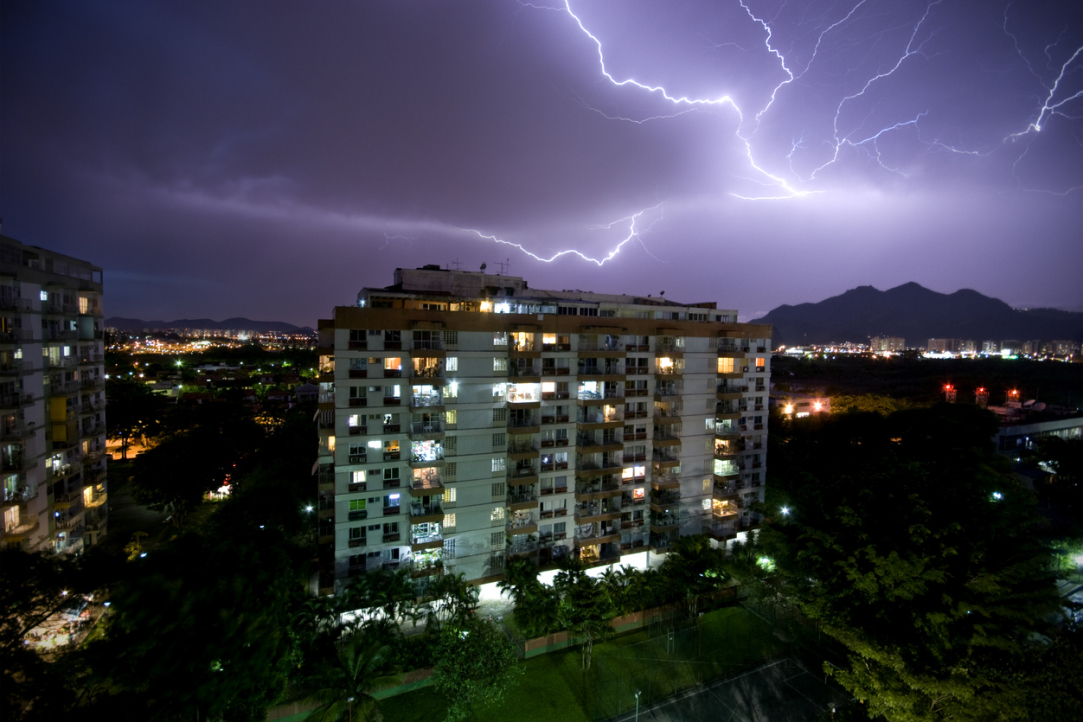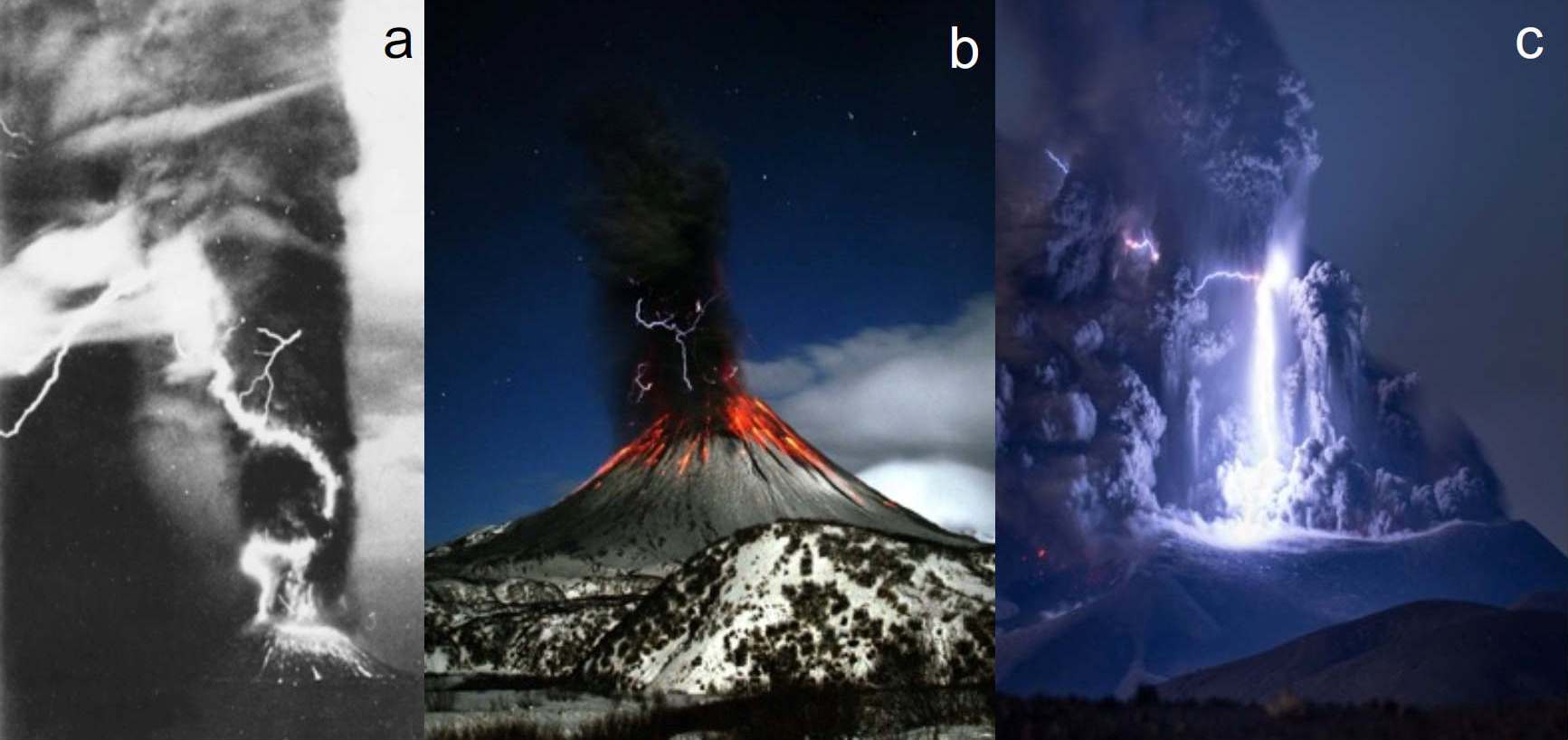New International Laboratory to Study Lighting Flashes and Volcanic Lightning

HSE University has launched a new International Laboratory for the Study and Assessment of Dangerous Geophysical Phenomena. Alexander Kostinskiy, Head of the Laboratory and Deputy Director of HSE MIEM, explains the laboratory’s future work, its important research and practical applications, and the role of international cooperation in the new laboratory.
Let’s begin with the name of the laboratory. What dangerous geophysical phenomena does it refer to? What exactly will you be studying?
First of all, we are planning to study lightning. We will focus on intracloud lightning and lightning initiation inside storm clouds. Secondly, we will be studying lightning discharge inside volcanic eruptions for the remote monitoring of volcanos. In the future, we will also investigate electric phenomena during dust storms, snowstorms, and tornados.

Although lightning is one of the most spectacular and common geophysical phenomena, there is still a lack of scientific consensus on many issues—including how and why it forms. It remains unknown how exactly lightning appears in storm clouds, what role cosmic rays play in this phenomenon, what processes create ultra-high-energy particle flows during thunderstorms, etc. Meanwhile, lightning discharges during volcanic eruptions, dust storms, and tornadoes are even less well studied than lightning.
These are all fundamental problems that can be solved only through close collaboration between researchers specialising in different fields of physics, such as thunder and lightning physics, gas-discharge and long-spark physics, cosmic-ray physics, and radiophysics. The aim of our laboratory is to facilitate cooperation between researchers working in these fields. This will help us solve problems related to the physics of lightning and intracloud lightning initiation, as well as high-energy atmospheric physics.
Why are these timely research topics? Lightning is a common natural phenomenon, albeit one we don’t often see. Why do we need to study it so thoroughly?
Actually, lightning occurs very often across the planet. There are 50 to 100 cloud-to-ground (CG) lightning discharges every second—that’s between 4 and 8 million strikes a day. Each square kilometre of the Earth’s surface sees an average of 2 to 5 lightning strikes per year.
Lightning is an incredibly dangerous phenomenon. Thunderstorms and lightning strikes kill people and animals, damage power and communication lines, and cause major electromagnetic interference and wildfires. Lightning is dangerous to aircraft—helicopters, planes, rockets—and tall buildings. It is known that lightning and other intracloud lightning discharges can be a crucial diagnostic factor in identifying and forecasting thunderstorms, which can signal approaching storms, tornados, wind shifts or hail.
Lightning has been a topic of scientific interest for many years. What research been done in this area so far?
People have been studying lightning for almost three centuries. Pioneers of such studies include Benjamin Franklin, Thomas Dalibard, and, later, Russia’s Mikhail Lomonosov.
Just 35 years ago, we thought that lightning was quite well studied and that there were only a couple of details left to clarify. However, breakthrough discoveries made in recent years have turned existing beliefs about lightning physics on their head
The first of these discoveries was made by David Le Vine. In 1980, he discovered narrow bipolar electric field changes, or ‘compact intracloud discharges’ (CIDs). They differed significantly from the usual manifestations of lightning—they have a very short lifespan and produce the strongest emissions in the VHF-radio range of all known geophysical phenomena.
John Winkler made the breakthrough in 1989. He discovered giant volumetric electric discharges, later called sprites, in the mesosphere (50–70 km above the Earth’s surface). They turned out to be a direct consequence of pulsed electric fields occurring after major lightning strikes. Several further types of such discharges were discovered later. Some of them (giant jets) extend from the upper edge of a cloud to the lower ionosphere.
In 1994, Gerald Fishman and his co-authors used satellite measurements to detect gamma-ray flashes coming from the Earth's surface. These flashes appear to be closely related to thunderstorms and may be generated by lightning.
Ground-based experiments later found that during thunderstorms, there can be strong fluxes of secondary energetic particles generated by cosmic rays. These are known as thunderstorm ground enhancements (TGE). The most detailed studies of this phenomenon were made in Armenia at the Aragats Research Station, part of the Cosmic Ray Division of the Alikhanian National Scientific Laboratory.
The Department is led by Professor Ashot Chilingarian. He agreed to become Academic Supervisor of the HSE University International Laboratory for the Study and Assessment of Dangerous Geophysical Phenomena, so we will be working even more closely together.
Could you tell us a little more about Professor Chilingarian?
Professor Chilingarian is known for his major contributions to high-energy astrophysics, space weather, and high-energy atmospheric physics. He is also a specialist in machine learning and the application of data analysis techniques to pattern recognition and genome analysis. Until 2018, he headed the Alikhanian National Scientific Laboratory (formerly the Yerevan Institute of Physics).
His notable scientific achievements include the measurement of the composition and energy of cosmic rays, the proof of the existence of thunderstorm ground enhancements, and the development of multidimensional methods for processing DNA microarray data based on the quantification of different types of gene expression in normal and tumour-infected tissues. Back in the 1980s, he developed a machine-learning methodology for experiments in high-energy physics and astrophysics. In January 2005, his team discovered highest energy protons accelerated in the vicinity of the Sun.
Professor Chilingarian is the author of over 500 scientific publications, a member of many international scientific and editorial boards, and a member of the American Physical Society. In 2003, he won the first-ever Electronic Science award of the World Summit on the Information Society for his interactive data visualisation network project.
Why was the International Laboratory for the Study and Assessment of Dangerous Geophysical Phenomena created at MIEM specifically? Has MIEM conducted lightning studies previously?
Yes, we have been interested in this area for many years. MIEM has a strong tradition of microwave and radiophysical research. We have done research on lightning development and its modelling with colleagues from academic institutions. In April 2019, the General Meeting of the Russian Academy of Sciences acknowledged our research as one of the most important achievements by Russian scientists in atmospheric physics.
Professor Andrey Yelizarov and Associate Professor Igor Nazarov are on the laboratory team that will carry out radiophysical research of lightning. I have been interested in researching the problem of lightning initiation in thunderstorm clouds for the past fifteen years.

In the mid-2010s, a scientific collaboration I was actively involved in discovered unusual plasma formations inside an artificially charged aerosol cloud. No similar formations had been observed in previous studies of high-pressure gas discharge physics. We believe that these formations may play an important role in the successive chain of transformations that lightning plasma goes through.
In 2019–2020, I and my American colleagues Thomas Marshall and Maribeth Stolzenburg analysed the latest experimental data obtained by studies of the radiophysics of lightning initiation and our data on long-spark physics. We formulated a hypothesis on the origin of lightning—a volumetric mechanism of lightning initiation and compact intracloud discharges by means of wide atmospheric showers of cosmic rays in a turbulent multiphase-charged medium.
Does this hypothesis change the current perception of lightning initiation?
It is quite a dramatic change in the view of lightning initiation inside clouds, and many researchers are still unable to accept it.
It was previously thought that lightning near Earth started out with a small discharge and grew bigger over time, like a baby anaconda eventually growing to its full impressive size.
However, we have presented serious experimental arguments to prove that dozens or even hundreds of thousands of small plasma channels appear when lightning is initiated due to cosmic rays. These channels form networks of plasma channels—like tangles of snakes—20 to 100 times faster than was thought before. These tangles very quickly merge into a giant lightning bolt, ie the lightning gets big almost immediately after its emergence.
One of the key objectives of the International Laboratory for the Study and Assessment of Dangerous Geophysical Phenomena will be to perform further thorough verification of this hypothesis from the point of view of both lightning and long-spark physics and wide cosmic-ray atmospheric showers.
What equipment do you need to verify this hypothesis? Will you have to do it outside Moscow?
One of the best places in the world to carry out this test is the research station on Mount Aragats. This is a world-recognised centre of cosmic ray physics, where neutral and charged particle fluxes, electric and geomagnetic fields, lightning discharges and weather conditions are constantly monitored. The station is equipped with sensors for multi-detector studies of the most important processes in the atmosphere of thunderstorms.
I believe we can travel to Armenia and do everything required to verify the hypothesis and study high-energy atmospheric physics. We are going to work in collaboration with the Academic Supervisor of our laboratory and his colleagues.
What other studies are you planning in the laboratory?
One of the focuses of our research will be initial breakdown pulses—powerful intracloud discharges that occur within the first hundreds of microseconds after lightning initiation. Studying them will help improve predictions of the various dangerous consequences of thunderstorms.
Another focus of our research is the radiophysics of intracloud discharges. It is necessary to study their location and sometimes reconstruct their trajectories inside clouds. Russian scientists lag behind their foreign colleagues in this field, primarily due to the lack of modern mapping equipment (which is required to develop temporary maps of lightning development), but I hope our laboratory will help close the gap.
In the future, we are also planning to study discharges and lightning that produce volcanic eruptions. We have established close contacts with volcanologists working in Kamchatka, geologists from Irkutsk, and volcanologists from Ludwig-Maximilian University in Munich who study active volcanoes in Europe. We are now collaborating with them to prepare applications for international grants.
One of the strengths of MIEM is the ability to work with large data arrays. Will your colleagues' competencies in this area be helpful to the laboratory?
Yes, they will. Most of the experiments we are planning to conduct involve obtaining and digitally processing large data arrays.
Currently, working with arrays of data obtained at nanosecond resolution from antennas (lightning mapping requires such temporal resolutions) involves storing and processing gigabyte-sized quantities of data after each lightning flash. The cost of software for many research antennas exceeds that of the radiophysical equipment. MIEM also has the significant computing power required to process the information obtained during the experiments.
How do you plan to involve HSE undergraduate and doctoral students in the laboratory?
We plan to involve undergraduate students in project activities, and doctoral students in research and engineering activities. Under the guidance of the laboratory staff, students can participate in relatively independent projects that can be devoted to the creation and adjustment of experimental devices, writing and adapting software for experiments and numerical and analytical calculations.
Working in our lab is not only a challenge, but also an exciting adventure for undergraduate and graduate students. They will take part in field experiments in exotic locations around the world, studying the electrical activity of spectacular natural phenomena such as thunderstorms, lightning, volcanic eruptions, and tornadoes. Four MIEM doctoral students have already agreed to work with us. We want to allocate each doctoral student, each young scientist, a separate research area that they will enjoy.
In the near future, we will begin to equip the premises and adjust the equipment for model laboratory experiments. The management of MIEM and HSE University has always provided us with generous support in our research. We hope that we will be able to equip the laboratory and get it up and running as soon as possible.
See also:
'Our Goal Is Not to Determine Which Version Is Correct but to Explore the Variability'
The International Linguistic Convergence Laboratory at the HSE Faculty of Humanities studies the processes of convergence among languages spoken in regions with mixed, multiethnic populations. Research conducted by linguists at HSE University contributes to understanding the history of language development and explores how languages are perceived and used in multilingual environments. George Moroz, head of the laboratory, shares more details in an interview with the HSE News Service.
‘It’s Thrilling to Have an Opportunity to Discuss Your Scientific Ideas with Interested People’
The International Laboratory of Dynamical Systems and Applications at HSE University–Nizhny Novgorod conducts in-depth theoretical and applied research, including the study of ocean waves, solar corona reconnections, volcanic phenomena, and ship stability. The lab’s researchers, who have received more than 20 significant research grants over the past five years, actively cooperate with Russian and international colleagues from China, Spain, the USA, the UK, Brazil, and other countries. Prof. Olga Pochinka spoke to the HSE News Service about the laboratory’s work.
'We Wanted to Create an Opportunity for Intercampus Teams to Engage in Promising Studies'
HSE University has announced the winners of the Project Competition in Basic Science Research for Intercampus Departments. The competition, which the university is organising for the first time, will provide funding to 10 research teams working on five topics. Four of the winning projects will be implemented by new research departments formed as a result of the competition.
Research Reveals RNA's Role in Cancer Progression
An international group of scientists and medical specialists, including HSE researchers, examined the role played by microRNA (miRNA) and long non-coding RNAs on the progression of ovarian cancer. Having analysed more than a hundred tumour samples, they found that miRNA can prevent cell mutation while long non-coding RNAs have the opposite effect of enabling such mutations. These findings can help design new drugs which act by regulating miRNA concentrations. The study was published in the International Journal of Molecular Sciences.
‘We Managed to Bring Together Specialists in AI, Pure Mathematics, and Neurobiology’
In early September, the HSE University Faculty of Computer Science hosted the international conference Computer Methods of Cognitome Analysis. The event was organised by the International Laboratory of Algebraic Topology and Its Applications at the faculty.
Russian Researchers Propose New Approach to Studying Facial Emotion Recognition
Researchers of the HSE University and the Southern Federal University (SFedU) have tested a new method for studying the perception of facial emotional expressions. They suggest that asking subjects to recognise emotional expressions from dynamic video clips rather than static photographs can improve the accuracy of findings, eg in psychiatric and neurological studies. The paper is published in Applied Sciences.
Academics Started Working Even More During the Pandemic
Academics’ work week became even longer during the pandemic. This is true of researchers from different countries, independently of their gender and specialisation, an international research team with HSE University participation found. Their working time during the pandemic was 51 hours compared to the usual 40. The increased number of working hours per week seems to have become part of the new academic norm. The results of the study were published in the Plos One journal.
HSE Researchers Develop New Method for Analysing Genetic Admixture of Populations
Researchers of the HSE International Laboratory of Statistical and Computational Genomics together with their international colleagues have proposed a new statistical method for analysing population admixture that makes it possible to determine the time and number of migration waves more accurately. The history of Colombians and Mexicans (descendants of Native Americans, Spaniards and Africans) features two episodes of admixture that occurred about 350 and 200 years ago for Mexicans and 400 and 100 years ago for Colombians. The results were published in the Plos Genetics journal.
Scholars from Moscow and Vladivostok Join Efforts to Study Institutes and Preferences in Economic Behaviour
Applications from HSE departments for the ‘Mirror Laboratories’ open project competition are open until May 20. One of the ‘mirror laboratories’ successfully operating today was created as a result of a similar competition in 2020 by economists from HSE University and Far Eastern Federal University (FEFU) to study institutes and preferences in economic behaviour. Alexis Belianin, Head of the HSE International Laboratory for Experimental and Behavioural Economics, talked about how peers from Moscow and Vladivostok collaborate.
Stress Disorders More Prevalent among Doctors due to the Pandemic
Psychologists from HSE University have joined their peers from Ekaterinburg to look into the impact of the pandemic on the mental health of Russian doctors. They found that medical staff are suffering from stress, anxiety, and depression more often than before. The results of the study were published in International Journal of Environmental Research and Public Health.


